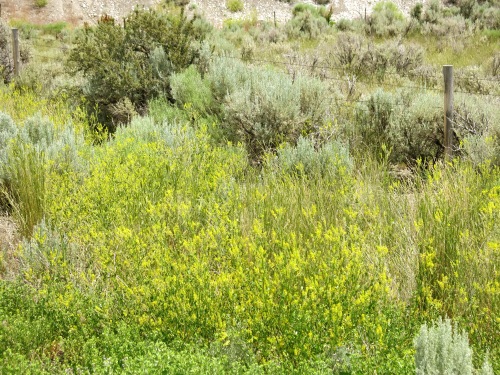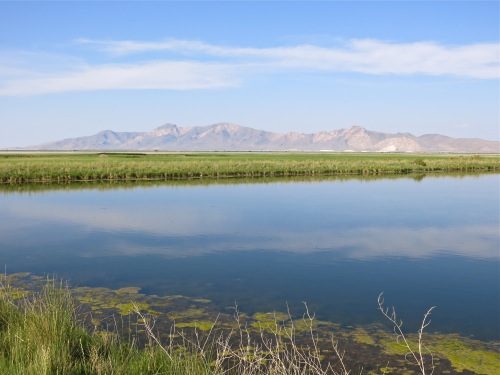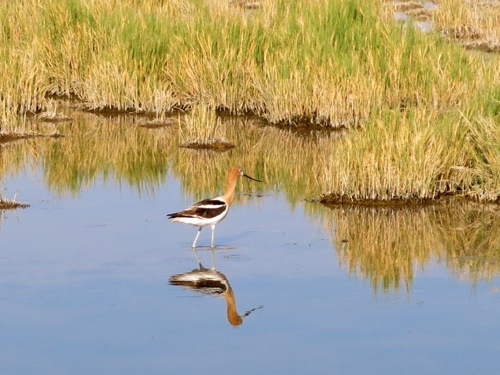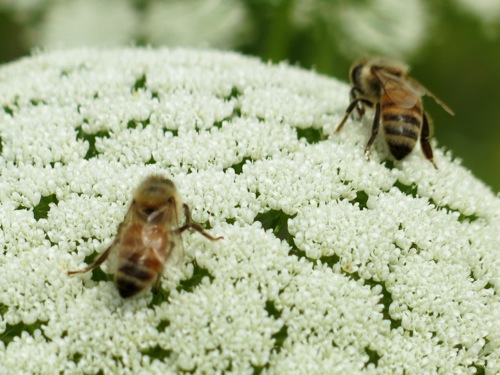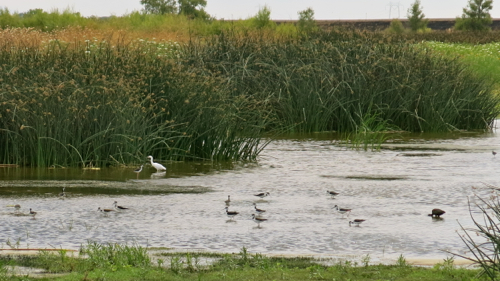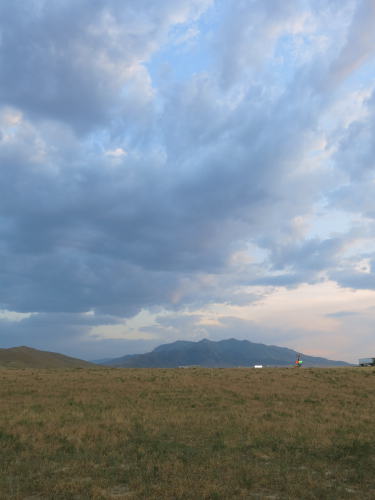About an hour from Evanston, I got off the interstate and headed north on state route 372. I drove over a rolling sagebrush-covered landscape; here and there along the road I could see the usual sights of the West: a railroad siding with a string of covered hoppers; a fence and gate with a sign saying something-or-other mine and huge piles of tailings in the distance; some kind of industrial complex blowing white smoke; and so on. Martin Heidegger talked about “enframing,” the way our technological society divides up the world with maps and grids, marking where there are resources we want, where we can run roads and railroads and pipelines, where we can enjoy recreation opportunities, where we can set aside some land for wildlife. I was heading to a national wildlife refuge that was created when the Green River was dammed, and a place had to be found for some of the displaced wildlife.
About a half hour from the interstate, I was pulling in to the headquarters compound of the Seedskadee National Wildlife Refuge. I walked down a low bluff about thirty or forty feet high, into the broad basin of the Green River, and suddenly there was life all around me: horse flies buzzed my head, Violet-green Swallows flew overhead, Marsh Wrens and Red-winged Blackbrids calling in the cattails, birds and insects everywhere. In dry Wyoming, water means life, and water flowed throughout the basin, in human-made channels through the highly-managed wetlands.
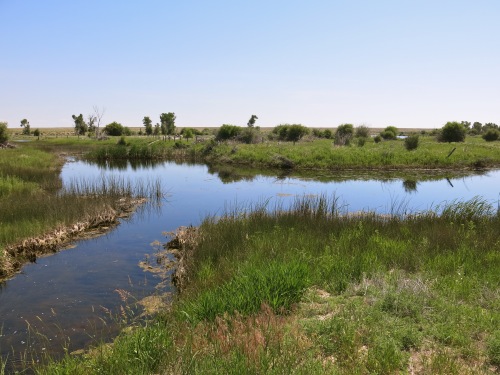
I walked down one trail, but it got swallowed up in lush, thigh-high grass — besides which, I was obviously disturbing some Killdeer, who must have had a nest nearby, since they circled around me calling repeatedly, trying to distract me from wherever it was their nestlings were. The Green River was rushing by, little pockets of turbulence marking its surface. A Cinnamon Teal burst out of the rushes and flew away. An Osprey sat in a nesting box on top of a tall telephone pole, and I walked towards it for a closer look. But it grew increasingly agitated, and began to fly in circles around the nest, so I retreated again.
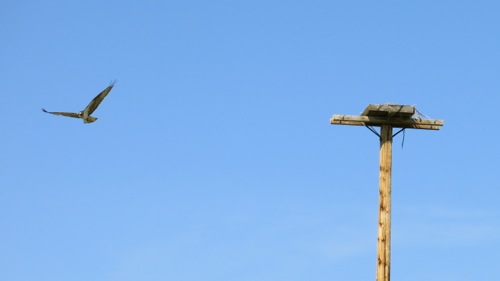
The remnants of an old log cabin and some agricultural implements were almost lost in the grass. I stopped to look at them for a moment, the new buildings of the refuge headquarters in the distance, and thought about how humans of European descent had made use of this land for a century and a half.
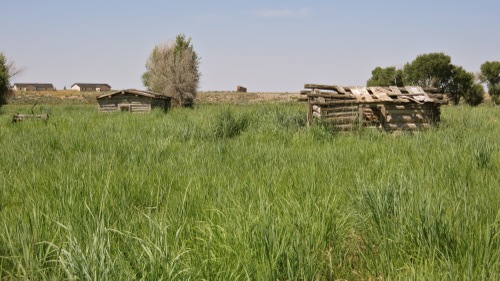
What I really wanted to do was talk over what I had seen with my father, but he really can’t talk on the phone any more. He likes wetlands as much as I do — Great Meadows National Wildlife Refuge is one of his favorite places, and the last place he took a real walk outdoors — and he would be interested in the birds I saw. When I see him in a few days, I’ll tell him about Seedskadee, and show him the photos I took.
Seedskadee N.W.R. was the highlight of my day; everything else was an anticlimax, even though I drove through some fantastic scenery. I already want to go back, and spend a week there, and fish in the Green River, and maybe see some Sage Grouse on their leks.

